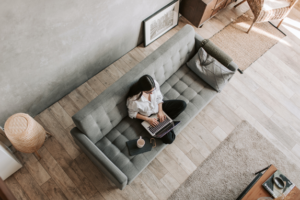The facts on parental leave
The Federal Government’s parental leave scheme will cost $260 million each year – but it means a lot more for expectant parents.
Q What is it?
A The Rudd Government’s Paid Parental Leave (PPL) scheme is a series of up to 18 weekly government payments for people caring for newborn or newly adopted children. It is not limited to a child’s mother and is intended to support low-income carers who might not have access to company maternity leave schemes.
Q Why is it important?
A While paid leave helps low-income carers spend more time with their newborn children, it also ensures women maintain their connection to the workforce. This increased participation by women will partly offset Australia’s ageing population in the years to come.
Q When does it start?
A Parents who give birth or adopt from January 1, 2011 will be eligible. This will give businesses and the community time to adjust to the scheme, the Government says. Perhaps more importantly, it will allow for the economy to recover to underwrite the expected annual cost of $260 million.
Q Do I have to be working full-time to qualify?
A No. Carers must be in paid work and have worked continuously for at least 10 of the 13 months prior and must have worked at least 330 hours in the previous 10 months – about a day a week. Part-timers will receive the full weekly amount.
Q How much will I get paid?
A The scheme is linked to the federal adult minimum wage, currently $543.78 per week. The Australian Fair Pay Commission reviews this rate every July, with any changes applying from October. You will not receive it if you earned more than $150,000 in the financial year before the child’s birth.
Q Do I get paid if I am the father of a child?
A The government stopped short of providing for paid paternity leave because it feared the additional cost. However, the PPL scheme pays the “primary carer” – meaning mothers and partners can change roles over the 18-week period, provided they are eligible and earn less than $150,000.
Q What about the Baby Bonus?
A You will not receive the $5000 Bonus if you receive the payments. Stay-at-home mothers will still be eligible for the Baby Bonus.
Q What will happen to the family tax benefits I receive?
A Carers receiving the new parental leave payments will not be eligible for the Baby Bonus and Family Tax Benefit B in a bid to stop one-income families from “double dipping”. The Family Tax Benefit of $3584.30 a year per child cuts out when a person’s income reaches $17,356 for a child aged 5-18 or $22,302 for a child aged under five.
Q Are the payments taxed?
A Yes. Payments replace regular wages and will be treated as a form of income. As the carer is expected to return to work at the end of the leave period, the payments will be included with other income and taxed at your marginal rate.
Q My employer already pays for some parental leave. Will they keep paying it?
A This is up to the employer. Industry groups have welcomed the scheme, but some employers may choose to cut back to a “top up” system that boosts carers’ pays from the minimum to regular wage. Others may cut their scheme entirely, effectively saving the money they used to spend. Businesses who decide to wind back their schemes without providing additional benefits may compensate their employees as it may be considered a condition of employment.
Q What happens to my regular leave when I’m on parental leave?
A The government’s scheme is silent on the accrual of annual, long service and sick leave during any period of government-paid parental leave. If an employer currently pays an employee during a period of maternity leave, the employee accrues other leave as they are considered to be “in the service” of the employer. If they receive no payment, they are not in service and do not accrue leave. Without further changes, this is likely to continue.
Q What if I have twins?
A You will receive payments for the first child, and be eligible for the Baby Bonus for the next.
Q How will the scheme affect my business?
A Businesses will face the same challenges. If a key employee goes on maternity or paternity leave, the business must still work out how to cover that position and for how long. Given the scheme only provides payments for 18 weeks – or about three months – discussions with carers will focus on whether they will take a longer period without government-paid leave.
Q As a business, do I still need to pay superannuation or employment taxes for someone on parental leave?
A Employers do not need to pay superannuation while an employee is receiving parental leave payments. Payroll tax and workcover payments will not be payable on the leave entitlement as it is paid by the government and does not form part of the business’s direct wage payments. Other leave entitlements – including annual and sick leave – will continue to accrue if the business pays the employee during that period.
Q I will be staying home to care for my children, but want to return to work one or two days. Will I still receive the payments? A You will still receive the payments if you are the child’s primary carer and earn less than $150,000 a year. If you have a partner, they can earn more than $1 million – their income is irrelevant.



